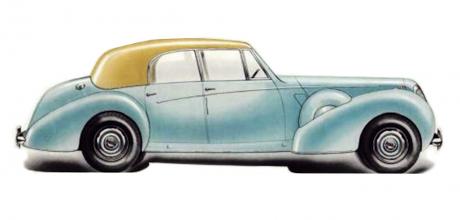A brief history of Jensen
The Jensen name is so closely associated with only one model – the Interceptor – that the rest of their 90-year history is almost forgotten. Not here!
We all know about the Interceptor, but there’s a lot more
Ask anyone to picture a Jensen and they’ll think of that big, muscular GT with the huge glass tailgate – the Interceptor. Most petrolheads will also remember the CV8 and probably the 541, but that’s usually where it stops. True car nerds might feel a surge of pride when telling you about the previous Interceptor – a hefty two-door model made from 1949-’57 – but even they will look blank if you ask them about anything earlier. Yet Jensen had been building their own cars since 1936.
Alan and Richard Jensen started by making an Austin Seven look sleeker and more modern, which impressed Alf Wilde at the Standard Motor Company. This led to the Standard Avon two-seaters, and after a false start as Patrick-Jensen Motors, bodying Wolseley Hornets, they bought into the West Bromwich coachbuilder WJ Smith & Sons, soon changing its name to Jensen Motors.
Success came fast. They gained a reputation for making porridge-like Morrises, Wolseleys and Fords look longer and sportier than the factory versions. They bodied a Ford V8 for Clark Gable which did wonders, leading to a pair of flathead V8-powered prototypes that they managed to show to Edsel Ford.
Engine supply was agreed, and the Jensen brothers found themselves car manufacturers. They built their first production model, the S-type, in 1935. These were large, handsome, machines with tuned Ford V8s and a two-speed Columbia back axle, available as saloons, tourers and drophead coupés. The next model, the H-type of 1939, was even better thanks to a twin-plug, straight-eight Nash engine or even a Lincoln-Zephyr V12. War came along in 1939 before enough had been built to secure a reputation. From 1946, the Jensen works manfully embarked on a successor, called the PW. Large, expensive and again with bought-in engines (first Meadows, then Austin), sales were achingly slow. The company survived long enough to introduce a sportier but still massive full-width coupé and DHC called the Interceptor, using a shortened PW chassis and the same Austin A135 six-pot.
‘THEY BODIED A FORD V8 FOR CLARK GABLE’
This showed the way ahead – Jensen could survive by ticking over on a couple of cars a month, as long as they stuck to upmarket GTs and took on other people’s body-building jobs: they constructed the Austin A40 Sports, Lea-Francis ‘Woody’ estates, some Austin- Healey 100s, the first Volvo P1800s and even some Sunbeam Tigers. They managed to cut their own production costs with a bold switch to glassfibre in 1955 for the 541, still with that Austin lump. Then, perhaps with an eye on what Bristol had done, they got bolder still for the 1962 CV8: unmistakable quad-headlamp front end, Chrysler V8, 140mph performance.
What happened next boosted Jensen to the big time but also sowed the seeds of its demise. Getting Touring to style a new GT was a great idea; getting Vignale to build it wasn’t. So production came back to West Bromwich while debts mounted and management squabbled – remember they were also absorbing the cost of creating the amazing FF, the world’s first four-wheel drive road car. Both Jensen brothers resigned from the board in 1966 and Jensen Motors bounced between different owners, one of whom (Kjell Qvale) brought in Donald Healey as Chairman to launch a new mid-market roadster to boost production volumes.
The Jensen-Healey rapidly acquired a reputation for rock-bottom build quality and the new production facilities couldn’t be kept busy. Redundancies followed, unions got the hump and everything ground to a halt in 1976. The swept up bits were sold to a new owner in 1982 and the Interceptor Mk IV went into production and lasted through the 1980s.
There were further attempts to kickstart the old firm, with the S-V8 of 2001 the boldest of these: an all-new roadster with a Ford Modular V8. Only 20 reached customers before administration struck again. Since then, a couple of Interceptor re-births have been mooted and super-powerful modernised examples completed, but it seems that as of 2022, this innovative British firm is finally gone for good.
The 1946 Jensen PW. Jensen-built Austin A40 Sports. 1935 Jensen S Type.


